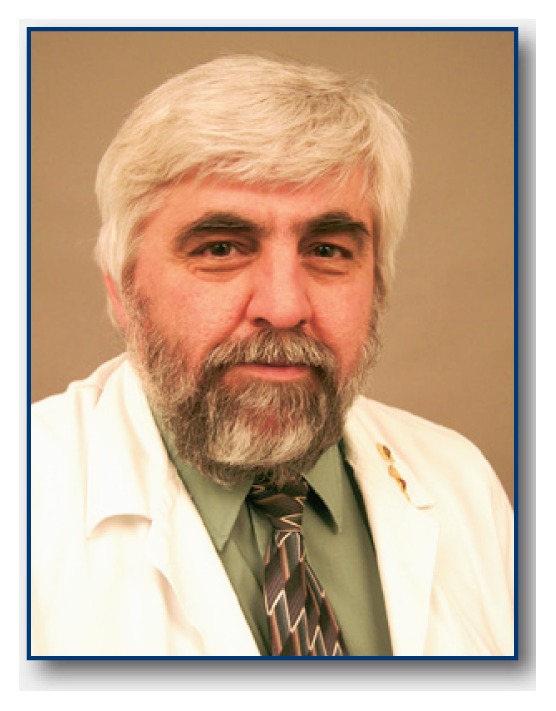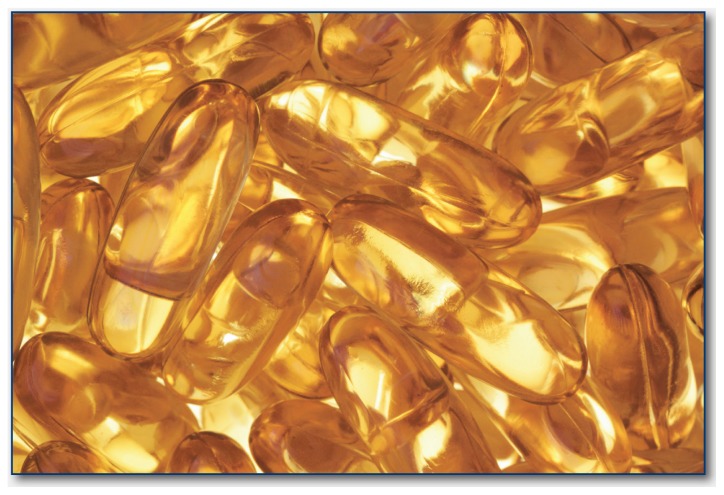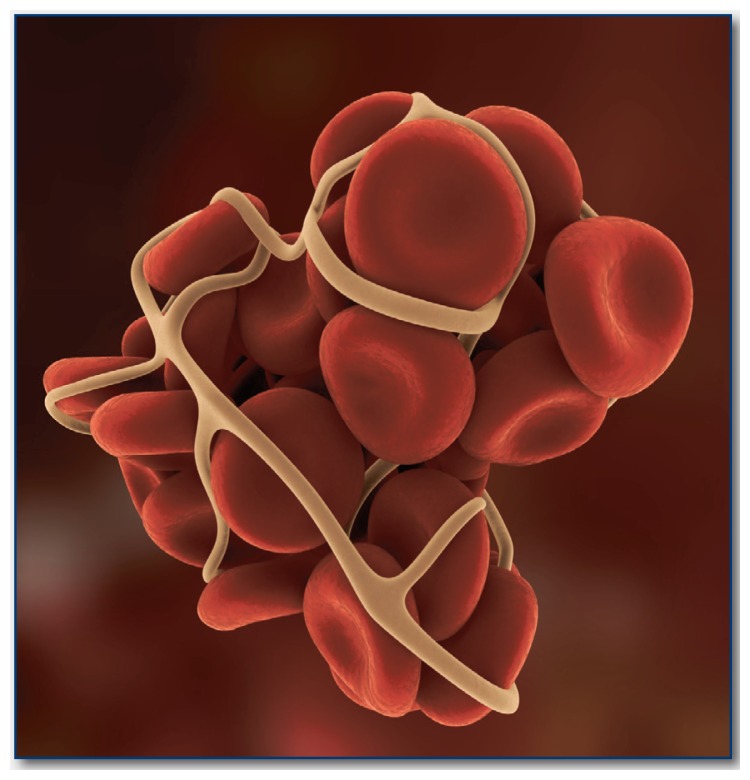Abstract
Omega-3 polyunsaturated fatty acids (PUFAs) have been shown to decrease the risk of cardiovascular disease. They reduce fatal and non-fatal myocardial infarction, stroke, coronary artery disease (CAD), sudden cardiac death, and all-cause mortality. They are well tolerated and cause minimal adverse effects. In this review, we sought to provide an overview of the current literature on the use of Omega-3 fatty acids for the treatment of CAD and discuss the possible benefits.
Introduction
Omega-3 polyunsaturated fatty acids (PUFAs) found in fish oil have been reported to reduce the risk of cardiovascular disease, primarily eicosapentaenoic acid (EPA), and docosahexaenoic acid (DHA), which have been the most widely available and most studied. A number of studies have shown a reduction in cardiovascular endpoints including fatal and non-fatal myocardial infarction (MI), stroke, coronary artery disease (CAD), sudden cardiac death (SCD), and all-cause mortality1. PUFAs promote atherosclerotic plaque stability and decrease ischemia related cardiac arrhythmias.2–5 PUFAs also have beneficial effects in mortality reduction following myocardial infarction.2
Daily consumption of PUFAs from either fish or fish oil supplements may be beneficial in patients with CAD.6,7 Oily fish, such as salmon, tuna, sardines, herring, and mackerel provide natural source of PUFAs.11 However, consumption of oily fish may be preferable because it provides Vitamin D, selenium, and naturally occurring antioxidants which are not found in purified fish oil supplements.6 In this article, we sought to review the literature and explore the potential benefits of PUFAs in the treatment of CAD.
Fish Oil Use for Cardiovascular Disease
PUFAs are fish oil extracts which have been shown to have beneficial effects in cardiovascular disease. Figure 1 displays fish oil capsules. PUFAs may reduce total mortality by as much as 20–50%, and sudden death in doses of 0.85 to 4.0 grams/day after a duration of 12 to 42 months.2 Larger doses of 3 to 4 grams daily decrease triglycerides and inflammation while increasing vascular reactivity. The Food and Drug Administration has approved Lovaza (formerly Omacor), a highly purified form of PUFAs, for severe hyperlipidemia at a dose of 4 grams/daily.6 Doses of 6 grams daily may decrease platelet function.8 PUFAs can also stabilize myocardial membranes which may decrease the incidence of ventricular arrhythmias and SCD.3,4,9
Figure 1.
Fish oil supplements contain omega 3 fatty acids with the specific concentrations of EPA and DHA on the label.
PUFAs are essential fatty acids and cannot be synthesized in man. Thus, it must be acquired from dietary sources.10 PUFAs may lower triglycerides by 20 to 50% through reduction of hepatic triglyceride synthesis by a reduction in the release of triglyceride rich VLDL particles, and increase HDL by 9%. 3, 11,12 PUFAs also increase hepatic fatty acid beta-oxidation.11,13
PUFAs may be safely used in combination with statins to enhance triglyceride reduction or used in patients with severe hypertriglyceridemia unresponsive to statins.14 They may also be of benefit in patients after myocardial infarction.15
Effects on Atherosclerosis
PUFAs have been shown to reduce atherogenesis.17 In post-MI patients, PUFAs have been shown to decrease total mortality, cardiovascular mortality, and sudden cardiac death.7 PUFAs also decrease the production of pro-atherosclerotic mediators such as adhesion molecules, vascular smooth muscle cell growth factor, and chemoattractant molecules.4 Consequently, atherosclerotic plaque formation is diminished through a reduction in the destructive process of cell migration into the vessel intima which causes atherosclerotic plaques.4 PUFAs may also incorporate into atherosclerotic plaques to provide stability by decreasing the proportion of macrophages which may prevent plaque rupture.18 The randomized Omacor Carotid Endarterectomy Intervention (OCEAN) study of carotid endarterectomy patients showed that EPA incorporation into atherosclerotic plaque reduces foam cells and T cells which were associated with decreased inflammation and more stable atherosclerotic plaques.19 Moreover, PUFAs also display antioxidant properties which improve endothelial function and may contribute to the anti-atherosclerotic benefits.
PUFA Associated Side Effects
PUFAs are overall a safe medication and well tolerated. Common adverse effects include nausea, gastrointestinal distress, and belching.7 Other less frequent effects include eructation, dyspepsia, worsening of glycemic control, taste perversion, and bleeding from inhibition of platelet aggregation.14,20 These adverse effects may be experienced at doses greater than 2 grams/day.4 PUFAs have not been shown to interact with statins to induce rhabdomyolysis, which has been seen with fibrates.21 PUFAs have no known combination effects with statins to induce myopathy, myositis, or rhabdomyolysis. Combination of PUFAs with fibrates is also not known to induce rhabdomyolysis. Therefore, PUFAs can be used as combination therapy with statins, niacin, or fibrates to augment lipid control. See Figure 2. No known liver, muscle, or renal toxicity has been reported. Currently, no clinical contraindication exists, although increased bleeding risk may occur with higher doses.
Figure 2.
Artist’s rendering of a blood clot. PUFAs can be used as combination therapy with statins, niacin, or fibrates to augment lipid metabolism.
Clinical Trials Evaluating Omega-3 Fatty Acids for CAD
Several clinical trials have studied the effects of PUFAs in CAD. The initial trial which evaluated the effects of fish oil in CAD was the Diet and Reinfarction Trial (DART).22 This was a randomized, non blinded, controlled trial which evaluated 2,033 male patients 4–6 weeks after an MI. The patients were followed for 2 years and divided into 3 study groups according to either fat intake (<30% of total calories), fiber intake (≥18 grams/day), and fatty fish intake (2 servings of oily fish per week). The primary endpoint was mortality and secondary endpoints were cardiac death and nonfatal MI. The group who received fatty fish displayed a 29% reduction (p<0.05) in mortality compared to the other study groups. The incidence of cardiac death was reduced in the fatty fish group by 33% (p<0.05). The study investigators speculated that the observed benefits of fatty fish intake was acquired from a reduction in SCD.
The Japan Eicosapentaenoic acid (EPA) Lipid Intervention Study (JELIS) trial23 studied 18,645 hypercholesterolemic patients (total cholesterol ≥250 mg/dL) in Japan who received statins with (n=9326) or without (n=9319) 1800 mg of EPA daily. The study was a randomized, open labeled, blinded study with 5 year patient follow-up. The primary endpoint was any major adverse coronary event (MACE), including sudden death, fatal and non-fatal MI, and other non-fatal events such as unstable angina, angioplasty, stenting, or coronary artery bypass grafting (CABG). Patients receiving EPA showed a 19% relative reduction in major coronary events (p=0.011). EPA treated patients also had 24% risk reduction in unstable angina and a 19% risk reduction in nonfatal coronary events. Thus, EPA administration showed beneficial effects in Japanese patients with hypercholesterolemia.
The GISSI-Prevenzione trial9 (Gruppo Italiano per lo Studio della Sopravvivenza nell’Infarto Miocardico) enrolled 11,324 patients three months after a MI to assess the effects of vitamin E (300 mg daily), PUFAs (1 gram daily), or no supplements on cardiovascular disease post MI. Patients were followed for 3.5 years and the primary endpoints included death, nonfatal MI, and stroke. Vitamin E showed no effect while PUFAs reduced death, combined death, non-fatal MI, and stroke. PUFAs reduced primary endpoints by 15% (p=0.023) and all cause mortality by 20%. Cardiovascular death was decreased by 30% and sudden deaths were decreased by 45%. The benefits were derived from a reduction in overall cardiovascular, coronary, and sudden death. This was a critical study which supported the tremendous cardioprotective benefits of PUFAs in patients after an MI.
A review by Harper et al.24 evaluated the effects of PUFAs in CAD. Fourteen randomized clinical trials were included with patients administered 0.85 to 4.8 grams of PUFAs daily. The review concluded that PUFAs may reduce total mortality, coronary artery disease death, and sudden death. Since it was a review of 14 randomized clinical trials, the composite reduction of total mortality amongst all the studies was not provided. However, the largest study included in the review, GISSI Prevenzione trial, consisting of 11,324 patients reported a 20% total mortality reduction and a 30% reduction of cardiovascular death. Therefore, the daily consumption of 0.5 to 1.8 grams of EPA and DHA may provide significant cardiovascular benefits.24
However, other studies have showed no significant effects of PUFAs in CAD. The recently published OMEGA Trial25 was a randomized, double-blind, placebo-controlled, prospective, multicenter, German study evaluating the effects of omega-3-acid ethyl esters-90 (1 gram/day for 1 year) on the incidence of SCD post-MI. In addition to treatment with PUFAs, enrolled patients were treated with optimal medical therapy for CAD. Patients (3,851) were randomized 3 to 14 days post-MI and underwent coronary angiography (93.8%) and percutaneous coronary intervention (77.8%) with a follow-up of 365 days. Secondary end-points included total mortality and non-fatal clinical events. The study did not reveal a significant benefit with the use of Omacor in addition to currently recommended treatments post-MI versus control in the primary (sudden cardiac death, 1.5% compared to 1.5%, p=0.84), secondary endpoints (total mortality, 4.6% compared to 3.7%, p=0.18), or major adverse cardiovascular events (10.4% to 8.8%, p=0.1).25 However, the study had certain limitations which may have confounded the results. The inclusion criteria for the patient enrollment period post-MI was extended during the study (3 days to 14 days post-MI) and the study did not reach statistical power. Therefore, further studies may be necessary to validate the results of this trial.
A study by Galan et al.26 (SU.FUL.OM3 trial), investigated the effects of PUFAs, B vitamins, or both in the prevention of major cardiovascular events in patients with a history of stroke or coronary artery disease. The double-blind, randomized, placebo controlled trial studied 2,501 patients with a history of myocardial infarction, unstable angina, or ischemic stroke. Patients received daily supplementation with either 5-methyltetrahydrofolate (560 micrograms), vitamin B-6 (3 mg), and vitamin B-12, or placebo; patients received omega-3 fatty acids (600 mg of eicosapentanoic acid and docosahexaenoic acid versus placebo. Mean duration of supplementation was 4.7 years with primary endpoints of non-fatal myocardial infarction, ischemic stroke, or death from cardiovascular cause (fatal MI, stroke, or sudden death). Secondary endpoints included acute coronary syndrome without MI, resuscitation from sudden death, coronary angioplasty, coronary artery bypass surgery, ventricular arrhythmia, supraventricular arrhythmia, cardiac failure, deep venous thrombosis, transient ischemic attack, pulmonary embolism, any vascular procedure, and death from all causes. The study found no significant difference in the prevention of cardiovascular disease with the use of omega-3 fatty acids in patients with a history of ischemic heart disease or strokes. The lack of positive results may be attributed to the initiation of PUFAs 101 days post-MI. The study may represent a true lack of effect associated with PUFAs or an inadequate dose to achieve possible benefits.
A study by Kromhout et al.27, evaluated the effects of PUFAs on cardiovascular events post-MI. In a multicenter, double-blind, placebo-controlled trial, 4,837 post-MI patients were randomized to receive 40 months of either margarine with combination of EPA and DHA, margarine with alpha-linolenic acid (ALA), margarine with EPA-DHA and ALA, or placebo. The primary endpoint (fatal and nonfatal cardiovascular events and cardiac interventions) were not significantly reduced with EPA-DHA, though treatment in a subgroup of women with ALA, compared to placebo and EPA-DHA alone approached statistical significance. The estimated dose of PUFAs in this study was only 376 mg daily, and of ALA was 1.9 g daily.
Conclusions
PUFAs have cardiovascular benefits with a possible reduction in the incidence of all cause cardiac mortality in CAD. Since PUFAs have with minimal adverse effects, it may be considered in conjunction with optimal medical therapy for CAD. Patients who are refractory or intolerant to statins secondary to rhabdomyolysis or other associated side effects may benefit from PUFA consumption for cholesterol reduction. Since they decrease triglycerides and VLDL while increasing HDL, the overall cardiovascular risk profile for atherosclerosis is improved.
However, some studies have shown no beneficial effects of PUFAs for CAD, perhaps limited by the doses used. Therefore, further studies are necessary to unequivocally define the potential benefits for CAD. The final decision to administer PUFAs for cardiovascular protection in CAD should be based on overall individual patient characteristics and consideration of the potential merits.
Biography
Subrata Kar, DO, and Richard Webel, MD, (above) are in the Division of Cardiovascular Medicine, University of Missouri School of Medicine.
Contact: webelr@health.missouri.edu

Footnotes
Disclosure
None reported.
References
- 1.Psota TL, Gebauer SK, Kris-Etherton P. Dietary omega-3 fatty acid intake and cardiovascular risk. Am J Cardiol. 2006;98:3i–18i. doi: 10.1016/j.amjcard.2005.12.022. [DOI] [PubMed] [Google Scholar]
- 2.Jacobson TA. Secondary prevention of coronary artery disease with omega-3 fatty acids. Am J Cardiol. 2006;98:61i–70i. doi: 10.1016/j.amjcard.2005.12.028. [DOI] [PubMed] [Google Scholar]
- 3.Weitz D, Weintraub H, Fisher E, Schwartzbard AZ. Fish oil for the treatment of cardiovascular disease. Cardiol Rev. 2010;18:258–63. doi: 10.1097/CRD.0b013e3181ea0de0. [DOI] [PMC free article] [PubMed] [Google Scholar]
- 4.Dimitrow PP, Jawien M. Pleiotropic, Cardioprotective Effects of Omega-3 Polyunsaturated Fatty Acids. Mini Rev Med Chem. 2009 doi: 10.2174/138955709788922638. [DOI] [PubMed] [Google Scholar]
- 5.Leaf A. On the reanalysis of the GISSI-Prevenzione. Circulation. 2002;105:1874–5. doi: 10.1161/01.cir.0000015344.46176.99. [DOI] [PubMed] [Google Scholar]
- 6.Lee JH, O’Keefe JH, Lavie CJ, Harris WS. Omega-3 fatty acids: cardiovascular benefits, sources and sustainability. Nature reviews Cardiology. 2009;6:753–8. doi: 10.1038/nrcardio.2009.188. [DOI] [PubMed] [Google Scholar]
- 7.Lavie CJ, Milani RV, Mehra MR, Ventura HO. Omega-3 polyunsaturated fatty acids and cardiovascular diseases. Journal of the American College of Cardiology. 2009;54:585–94. doi: 10.1016/j.jacc.2009.02.084. [DOI] [PubMed] [Google Scholar]
- 8.Eckel RH. The fish oil story remains fishy. Circulation. 2010;122:2110–2. doi: 10.1161/CIRCULATIONAHA.110.986976. [DOI] [PubMed] [Google Scholar]
- 9.Marchioli R, Schweiger C, Tavazzi L, Valagussa F. Efficacy of n-3 polyunsaturated fatty acids after myocardial infarction: results of GISSI-Prevenzione trial. Gruppo Italiano per lo Studio della Sopravvivenza nell’Infarto Miocardico. Lipids. 2001;36(Suppl):S119–26. doi: 10.1007/s11745-001-0694-8. [DOI] [PubMed] [Google Scholar]
- 10.Roth EM, Harris WS. Fish oil for primary and secondary prevention of coronary heart disease. Curr Atheroscler Rep. 2010;12:66–72. doi: 10.1007/s11883-009-0079-6. [DOI] [PubMed] [Google Scholar]
- 11.Lavie CJ, Milani RV, Mehra MR, Ventura HO. Omega-3 polyunsaturated fatty acids and cardiovascular diseases. J Am Coll Cardiol. 2009;54:585–94. doi: 10.1016/j.jacc.2009.02.084. [DOI] [PubMed] [Google Scholar]
- 12.McGowan MP, Proulx S. Nutritional supplements and serum lipids: does anything work? Current atherosclerosis reports. 2009;11:470–6. doi: 10.1007/s11883-009-0070-2. [DOI] [PubMed] [Google Scholar]
- 13.Robinson JG, Stone NJ. Antiatherosclerotic and antithrombotic effects of omega-3 fatty acids. Am J Cardiol. 2006;98:39i–49i. doi: 10.1016/j.amjcard.2005.12.026. [DOI] [PubMed] [Google Scholar]
- 14.Omega-3 polyunsaturated fatty acids (Omacor) for hypertriglyceridemia. Med Lett Drugs Ther. 2005;47:91. [PubMed] [Google Scholar]
- 15.Nambi V, Ballantyne CM. Combination therapy with statins and omega-3 fatty acids. Am J Cardiol. 2006;98:34i–38i. doi: 10.1016/j.amjcard.2005.12.025. [DOI] [PubMed] [Google Scholar]
- 16.Rupp H. Omacor (prescription omega-3-acid ethyl esters 90): From severe rhythm disorders to hypertriglyceridemia. Adv Ther. 2009;26:675–90. doi: 10.1007/s12325-009-0045-2. [DOI] [PubMed] [Google Scholar]
- 17.Stalenhoef AF, de Graaf J, Wittekoek ME, Bredie SJ, Demacker PN, Kastelein JJ. The effect of concentrated n-3 fatty acids versus gemfibrozil on plasma lipoproteins, low density lipoprotein heterogeneity and oxidizability in patients with hypertriglyceridemia. Atherosclerosis. 2000;153:129–38. doi: 10.1016/s0021-9150(00)00381-6. [DOI] [PubMed] [Google Scholar]
- 18.Saravanan P, Davidson NC, Schmidt EB, Calder PC. Cardiovascular effects of marine omega-3 fatty acids. Lancet. 2010;376:540–50. doi: 10.1016/S0140-6736(10)60445-X. [DOI] [PubMed] [Google Scholar]
- 19.Zampelas A. Eicosapentaenoic acid (EPA) from highly concentrated n-3 fatty acid ethyl esters is incorporated into advanced atherosclerotic plaques and higher plaque EPA is associated with decreased plaque inflammation and increased stability. Atherosclerosis. 2010;212:34–5. doi: 10.1016/j.atherosclerosis.2010.06.018. [DOI] [PubMed] [Google Scholar]
- 20.Bays H. Clinical over view of Omacor: a concentrated formulation of omega-3 polyunsaturated fatty acids. Am J Cardiol. 2006;98:71i–76i. doi: 10.1016/j.amjcard.2005.12.029. [DOI] [PubMed] [Google Scholar]
- 21.Kar S, Chockalingam A. Statin-Associated Rhabdomyolysis With Acute Renal Failure Complicated by Intradialytic NSTEMI. A Review of Lipid Management Considerations. Am J Ther. 2010 doi: 10.1097/MJT.0b013e3181ff7c79. [DOI] [PubMed] [Google Scholar]
- 22.Burr ML, Fehily AM, Gilbert JF, Rogers S, Holliday RM, Sweetnam PM, Elwood PC, Deadman NM. Effects of changes in fat, fish, and fibre intakes on death and myocardial reinfarction: diet and reinfarction trial (DART) Lancet. 1989;2:757–61. doi: 10.1016/s0140-6736(89)90828-3. [DOI] [PubMed] [Google Scholar]
- 23.Yokoyama M, Origasa H, Matsuzaki M, Matsuzawa Y, Saito Y, Ishikawa Y, Oikawa S, Sasaki J, Hishida H, Itakura H, Kita T, Kitabatake A, Nakaya N, Sakata T, Shimada K, Shirato K. Effects of eicosapentaenoic acid on major coronary events in hypercholesterolaemic patients (JELIS): a randomised open-label, blinded endpoint analysis. Lancet. 2007;369:1090–8. doi: 10.1016/S0140-6736(07)60527-3. [DOI] [PubMed] [Google Scholar]
- 24.Harper CR, Jacobson TA. Usefulness of omega-3 fatty acids and the prevention of coronary heart disease. Am J Cardiol. 2005;96:1521–9. doi: 10.1016/j.amjcard.2005.07.071. [DOI] [PubMed] [Google Scholar]
- 25.Rauch B, Schiele R, Schneider S, Diller F, Victor N, Gohlke H, Gottwik M, Steinbeck G, Del Castillo U, Sack R, Worth H, Katus H, Spitzer W, Sabin G, Senges J. OMEGA, a randomized, placebo-controlled trial to test the effect of highly purified omega-3 fatty acids on top of modern guideline-adjusted therapy after myocardial infarction. Circulation. 2010;122:2152–9. doi: 10.1161/CIRCULATIONAHA.110.948562. [DOI] [PubMed] [Google Scholar]
- 26.Galan P, Kesse-Guyot E, Czernichow S, Briancon S, Blacher J, Hercberg S. Effects of B vitamins and omega 3 fatty acids on cardiovascular diseases: a randomised placebo controlled trial. BMJ. 2010;341:c6273. doi: 10.1136/bmj.c6273. [DOI] [PMC free article] [PubMed] [Google Scholar]
- 27.Kromhout D, Giltay EJ, Geleijnse JM. n-3 fatty acids and cardiovascular events after myocardial infarction. The New England journal of medicine. 2010;363:2015–26. doi: 10.1056/NEJMoa1003603. [DOI] [PubMed] [Google Scholar]




